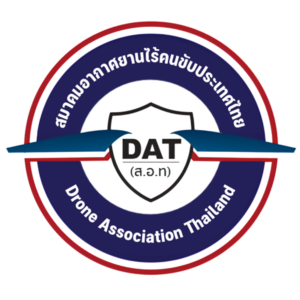Nowadays, drones or unmanned aerial vehicles (UAVs) are widely popular in Thailand, whether for photography, land surveying, or even commercial purposes. However, operating drones in Thailand is subject to strict laws and regulations that all users must comply with to ensure safety and avoid violating others' rights. This article explains the drone laws and flight restrictions in Thailand that users should be aware of.
Drone laws and regulations in Thailand
The use of drones in Thailand is under the supervision of The Civil Aviation Authority of Thailand (CAAT) and The NBTC Office With the following key laws and regulations:
1. Drone registration
- Users who wish to operate drones in Thailand must register their drones with The Civil Aviation Authority of Thailand (CAAT) If the drone has the following characteristics:
- Weighs more than 2 kilograms
- Equipped with a camera or image recording device
- If the drone weighs more than 25 kilograms, additional permission must be obtained from the Ministry of Transport.
2. Frequency usage authorization
- Drone users who operate via radio frequency must obtain frequency usage authorization from The NBTC Office To prevent interference with other frequencies
3. Insurance coverage
- Drone users registered with the CAAT are required to obtain third-party liability insurance to cover potential damages arising from drone operations.
Drone flight restrictions
Drone flights in Thailand are subject to important restrictions to ensure safety and prevent legal violations, as follows:
1. Area restrictions
- Drones are prohibited from flying in restricted areas, such as:
- Near airports or areas with air traffic (within a 9-kilometer radius from the airport)
- Government premises or important locations, such as the Grand Palace, military bases, and other government facilities
- Densely populated areas or places with large gatherings of people
- To fly in restricted areas, permission must be obtained from the relevant authorities.
2. Altitude restrictions
- Do not fly drones higher than 90 meters from the ground, unless authorized by the CAAT
3. Visual line-of-sight limitations
- The drone operator must maintain visual line of sight (VLOS) with the drone at all times and must not fly the drone beyond visual range.
4. Time restrictions
- Flying drones at night is prohibited unless special permission is granted.
5. Privacy restrictions
- Do not fly drones closer than 30 meters without permission
- Do not use drones to record images or audio that violate others' privacy.
Penalties for violating the law
Violating drone laws and regulations may lead to severe penalties, such as:
- Operating a drone without registration or authorization may result in a fine of up to 40,000 baht or imprisonment for up to 1 year
- Flying a drone in restricted areas or negligently may result in criminal prosecution.
Tips for drone users
- Study laws and regulations: Before operating a drone, it is important to thoroughly study the relevant laws and regulations.
- Check the area before flying: Use applications or maps showing restricted areas to avoid violating the law.
- Follow safety regulations: Fly drones in safe areas and avoid disturbing others.
- Obtain insurance: For peace of mind, you should obtain insurance that covers potential damages.
